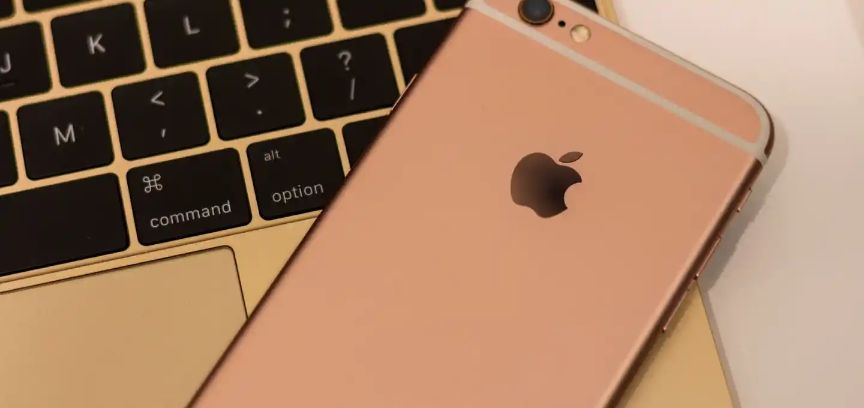The Evolution of the iPhone: From the Original to the Latest Model
3 min read
15 Mar 2024
The iPhone, introduced by Apple Inc. in 2007, revolutionized the world of mobile technology and ushered in a new era of smartphones. Over the years, the iPhone has evolved significantly, with each new generation pushing the boundaries of innovation, design, and functionality. In this article, we'll take a journey through time to explore the evolution of the iPhone, from the original to the latest model.
iPhone (1st Generation) - 2007
The first-generation iPhone, released in 2007, marked a pivotal moment in mobile technology. Key features included:

- Multi-Touch Display: The iPhone featured a 3.5-inch display with multi-touch capability, allowing users to pinch, swipe, and tap to interact with the device.
- Safari Browser: It introduced the Safari web browser on a mobile device, providing a desktop-like web browsing experience.
- Visual Voicemail: The iPhone brought visual voicemail, which allowed users to see a list of their voicemails and choose which ones to listen to.
- App Store: Although initially lacking an App Store, the iPhone later introduced one in 2008, opening the door to third-party app development and a thriving app ecosystem.
iPhone 3G - 2008
The iPhone 3G, released in 2008, brought significant improvements:
- 3G Connectivity: As the name suggests, it introduced 3G connectivity, making data speeds faster for internet browsing and app usage.
- GPS: The iPhone 3G included built-in GPS for location-based services and turn-by-turn navigation.
- App Store: The iPhone 3G was the first iPhone to launch with the App Store, allowing users to download and install third-party apps.
iPhone 3GS - 2009
The iPhone 3GS, released in 2009, focused on enhancing performance and capabilities:
- Faster Processor: It featured a faster processor, making apps launch more quickly and improving overall performance.
- Video Recording: The iPhone 3GS introduced video recording capabilities, allowing users to capture moments in video.
iPhone 5 - 2012
In 2012, the iPhone 5 arrived with several notable upgrades:
- Taller Display: It featured a taller 4-inch display with a 16:9 aspect ratio.
- Lightning Connector: The iPhone 5 replaced the 30-pin connector with the smaller Lightning connector.
- A6 Processor: It included the A6 chip for faster performance and graphics.
- LTE Connectivity: The iPhone 5 supported LTE for faster data speeds.
iPhone 6 and 6 Plus - 2014
The iPhone 6 and 6 Plus, released in 2014, introduced larger screens and other improvements:
- Larger Displays: The iPhone 6 had a 4.7-inch display, while the iPhone 6 Plus featured a 5.5-inch display, appealing to users who preferred larger screens.
- A8 Processor: Both models featured the A8 chip for improved performance and graphics.
- Apple Pay: Apple introduced Apple Pay, its mobile payment system, with the iPhone 6 series.
iPhone 6s and 6s Plus - 2015
The iPhone 6s and 6s Plus, released in 2015, brought new capabilities to the iPhone lineup:
- 3D Touch: The iPhone 6s introduced 3D Touch, a pressure-sensitive display that enabled new interaction possibilities.
- A9 Processor: It featured the A9 chip for improved performance and energy efficiency.
- 12-Megapixel Camera: The camera received an upgrade to 12 megapixels for higher-quality photos and 4K video recording.
iPhone SE (1st Generation) - 2016
In 2016, Apple introduced the first-generation iPhone SE with a focus on a compact design:
- Compact Design: It featured the compact design of the iPhone 5s with a 4-inch display.
- A9 Processor: Despite its size, it included the A9 chip for improved performance.
- 12-Megapixel Camera: The camera was upgraded to 12 megapixels for better photo and video quality.
iPhone 11 - 2019
The iPhone 11, released in 2019, continued the iPhone's legacy with key features:
- Dual-Camera System: The iPhone 11 featured a dual-camera system with an ultra-wide lens for expanded photography options.
- A13 Bionic Processor: It included the A13 Bionic chip, known for its performance and energy efficiency.
iPhone 11 Pro and 11 Pro Max - 2019
These models, also released in 2019, offered advanced capabilities:
- Triple-Camera System: These models introduced a triple-camera system for advanced photography and videography.
- Super Retina XDR Display: Both models featured Super Retina XDR displays for enhanced brightness and contrast.
iPhone SE (2nd Generation) - 2020
The second-generation iPhone SE, released in 2020, combined affordability with performance:
- Compact Design: It retained the design of the iPhone 8 with a 4.7-inch display.
- A13 Bionic Processor: Despite its size, it featured the A13 Bionic chip for impressive performance.
- Affordable Pricing: The iPhone SE (2nd generation) offered an affordable entry point into the iPhone ecosystem.
iPhone 12, 12 mini, 12 Pro, and 12 Pro Max - 2020
In 2020, Apple unveiled a new lineup with significant upgrades:
- Super Retina XDR Display: Both models featured Super Retina XDR OLED displays.
- A14 Bionic Processor: They included the A14 Bionic chip for exceptional performance and energy efficiency.
- Pro Camera System: These models offered a pro-level camera system with advanced photography and videography features.
- LiDAR Scanner: They included a LiDAR scanner for augmented reality applications.
iPhone 13, 13 mini, 13 Pro, and 13 Pro Max - 2021
As of my last knowledge update in September 2021, I don't have information on the most recent iPhone models or any potential upcoming releases. However, Apple typically unveils new iPhones in September of each year, and it's reasonable to expect continued advancements in technology, design, and features.
The evolution of the iPhone from its inception in 2007 to the present day showcases Apple's commitment to innovation and its dedication to providing users with cutting-edge technology. Each new generation of iPhones has brought improvements in performance, camera capabilities, design, and functionality, ensuring that the iPhone remains one of the most iconic and influential consumer electronics devices in the world.



